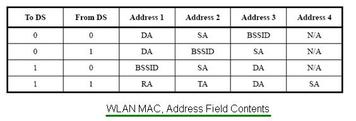Dual Band WiFi: Meaning and Routers Explained
Advertisement
This article clarifies the concept of dual-band WiFi and highlights popular dual-band WiFi router vendors.
Introduction:
WiFi, short for Wireless Fidelity, relies on Wireless LAN (WLAN) standards defined in the IEEE 802.11 series. Various versions of the WiFi standard exist, including 802.11a, 11b, 11g, 11n, and 11ac, each supporting different data rates and transmission distances.
Understanding Dual Band WiFi
A dual-band WiFi device operates on two frequency bands: 2.4 GHz and 5 GHz.

- 802.11a devices support the 5 GHz band.
- 802.11b and 11g devices support the 2.4 GHz band.
- 802.11n and 11ac devices support both the 2.4 GHz and 5 GHz bands.
Therefore, when purchasing a dual-band WiFi router or dongle, verify that it supports either “11n” or “11ac” standards, indicated on the device or its packaging. These standards offer significantly higher data rates compared to 11a/11b/11g.
Figure 1 illustrates dual-band WiFi System-on-Chip (SoC) connections with RF front-end components like LNA (Low Noise Amplifier), PA (Power Amplifier), switch, diplexer, and antenna. The LNA is used in the receiver chain, and the PA is used in the transmitter chain. Separate paths exist for the 2.4 GHz and 5 GHz bands.
Dual Band WiFi Router Vendors

Figure 2 shows a WiFi router from Linksys.
The table below lists popular dual-band WiFi router vendors. Almost all dual-band WiFi routers support the 802.11n standard, enabling data rates (speeds) of 600 to 900 Mbps. This is much faster than the 54 Mbps supported by 802.11g and the 11 Mbps supported by 802.11b.
| Manufacturer or vendor | Description |
|---|---|
| D-Link | Model No: DIR-816 |
| TP-Link | TL-WR940N |
| NETGEAR | N600 |
| Linksys | E900 |
| XIAOMI | Mi WiFi Router 3 |
Advertisement
 RF
RF



